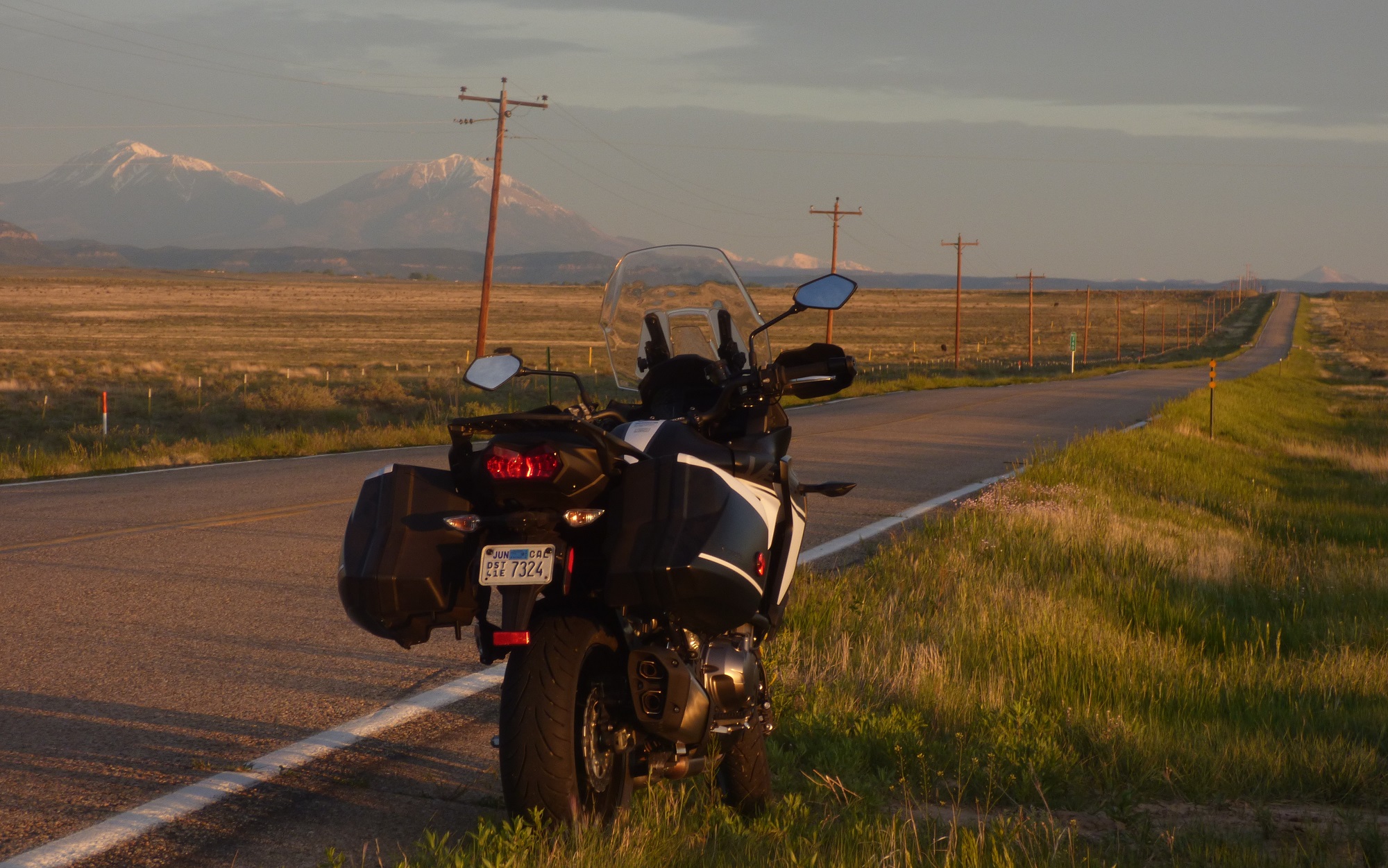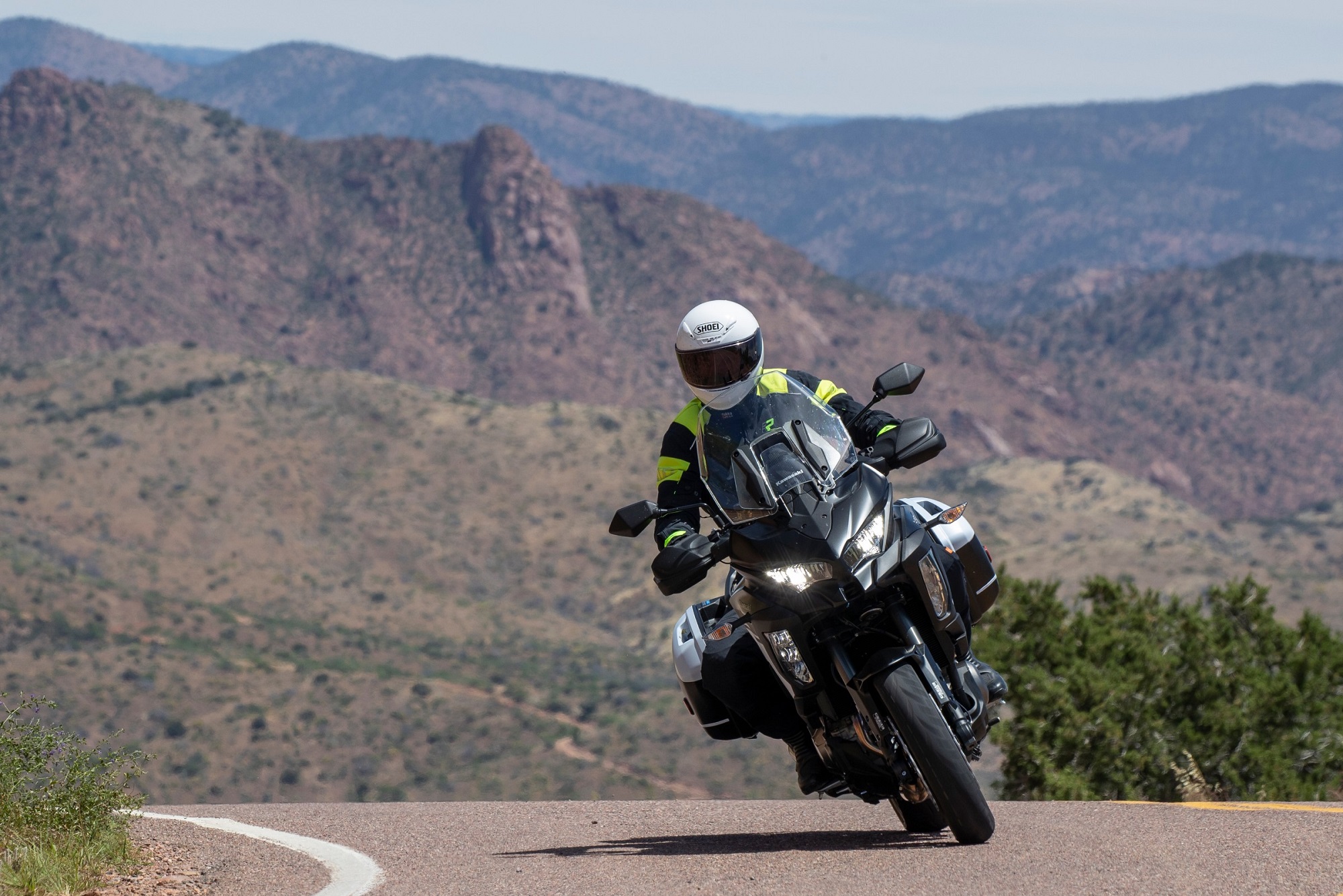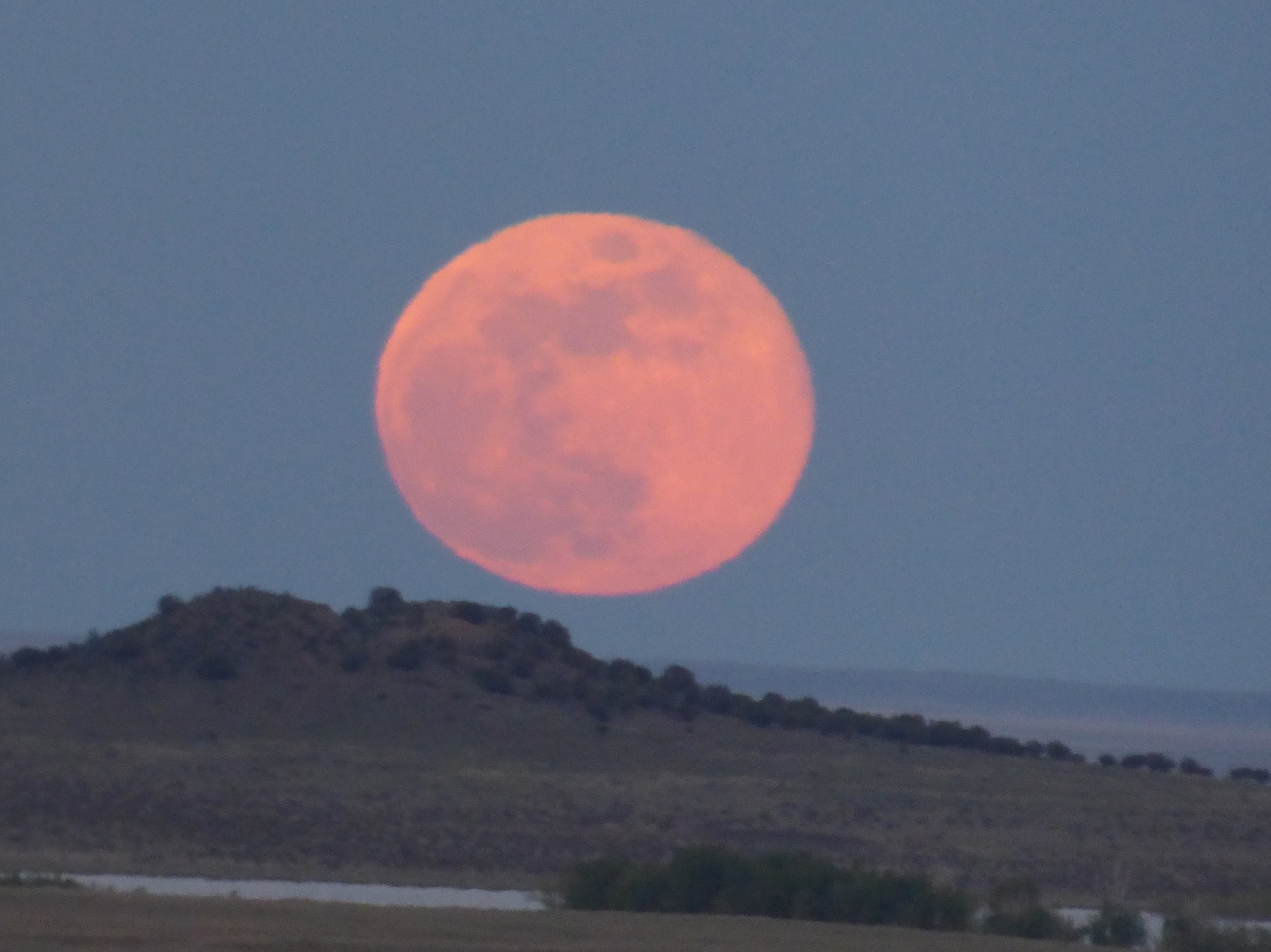
Sunrise on the road in eastern Colorado.
One of the great things about a long ride across the big distances of the United States is that, if you’re paying attention at all, you’ll learn something about your own country. The Great Plains give you time to think. And observe. Preferably not in that order.
I didn’t exactly cross the entire United States, but I did ride through three time zones, from Arizona to Ohio, recently. I flew to Arizona for the press introduction of the 2019 Kawasaki Versys 1000 SE LT+ and after the two-day press ride around Arizona, Kawasaki let me keep the bike and ride it back to Philadelphia, so the rest of my team at RevZilla’s Common Tread could also test ride it. I haven’t made it to Philadelphia yet, but I did ride to Ohio in three days, took some time to rest up, and then rode to Wisconsin to cover the MotoAmerica races at Road America.

After two days of testing the Versys in Arizona with other motorcycle writers, I began the long ride home. Photo by Kevin Wing.
Some of the terrain I hadn’t seen in years, while other parts of the trip took me to places entirely new to me. So in essence, it was all new to me, due to the passage of time.
From the red rocks of Arizona, to the high passes over the Rockies in the Carson National Forest in northern New Mexico, where the trees were yet without leaves and snow still covered most of the ground, and from the vast open spaces of eastern Colorado to the very green banks and muddy-brown rivers of Illinois after a rainy May, the country rolled under my front wheel like a movie reel. Among all that, two totally subjective impressions stayed with me in the days at home, as I decompressed from my three-day run.

While I wasn’t paying attention, thousands of windmills have sprouted across the country, like these outside Spearville, Kansas.
One was something new: Sometime, when I wasn’t looking, the country erected thousands of windmills. No longer were we solely burning fossil fuels for our power, out there in the big empty middle of the country. Sure, I’d seen plenty of windmills on the high ridges of Pennsylvania and West Virginia in my many eastern trips closer to home. But not in the numbers I saw in Kansas, and that impression was reinforced in Illinois and Wisconsin on my trip to Road America. I crossed Kansas mostly on U.S. 50, which took me through Spearville, a town of 773 people and 67 giant windmills. Even parts of the country known for cultural conservatism now express pride in producing energy that doesn’t involve burning finite resources.
The other thing that struck me was more personal, and gets back to the title of this piece. Depending on whose numbers you believe, somewhere between three to five percent of U.S. residents are vegetarians. According to the Motorcycle Industry Council, eight percent of U.S. households own a motorcycle (and that probably includes a lot of motorcycles that haven’t been ridden in years, plus a huge number that are ridden only a few sunny weekends and may not rack up as many more miles in a year than I did crossing Kansas in a day). I am a part of both of these small minorities, and while I don’t know how much overlap there is between the two groups, since I don’t go around asking people I meet in the motorcycle industry about their dietary preferences, I suspect it’s very little. In fact, the only person I’ve ever met at a motorcycle event who I knew was a vegetarian was a cookbook author who went by the pen name of Biker Billy. He was known for his spicy dishes, but if you paid close attention, you realized that none of them had meat in them.
More often, it seems, if I’m at a faraway motorcycle event and the locals want to show off their area, they usually want to ride to a really good barbeque joint or a burger place. Carnivores abound. I met maybe the most extreme example many years ago at a press event hosted by Harley-Davidson in Milwaukee. They took us to a nice restaurant where by chance I was seated next to the writer for Easyriders magazine. And by “writer” I mean a former garage operator who had developed enough facility with the written word to get the occasional assignment from the magazine. Salads were served and I noticed he never touched his. When the waitress came around, she politely asked, “Are you finished with your salad, sir?”
He shoved away the bowl, as if it contained some particularly offensive offal, and said with a sneering tone, “I don’t eat rabbit food.”
Riding across Kansas, I began seeing signs of the meat industry. It’s something we don’t see as often back east. I passed the huge feed lots, where cattle stood around in muddy pens with nothing to do but munch on the food that was there to build up the fat that would give just the right marbling to someone’s future steak. I passed a tractor-trailer stacked high with cages of domestic turkeys, their skin showing red through the missing feathers, the lucky ones (I guess) in the outer cages getting a last view of the world. I passed an enormous train consisting of nothing but cattle cars, carrying more steers on their way to the feed lots, and then the killing machines.
It put me in a somber frame of mind.
Now I’m neither uninformed nor innocent. As the grandson of a small-time cattle farmer who never bought hamburger at a store because he raised and slaughtered his own, I participated as a child in what was a normal task on the farm. If you wanted to eat, you had to kill. Most of my life I ate meat, at least some. But eventually I decided I felt better without it, in both physical and psychic terms.
As someone who has seen the process, I’ve always said that if everyone had to kill their own food, there would be a lot more vegetarians in the world. Far more than five percent, I’d bet.

One sight from my trip that I’ll remember was this glorious moonrise over northern New Mexico.
In a hundred years, someone else will cross the great belly of the country as I did on this trip and I wonder what they’ll see. I assume the windmills will have long been replaced by something more efficient. I wonder if the feedlots will still be there, or if the people of that time will remark on them as a historical oddity, as in, “You know, a century ago people still brought huge trainloads of cattle here to slaughter them because almost everyone ate meat back then.”
And that person’s traveling companion may reply, “You know what’s even stranger than that? Some people back then still rode motorcycles, those two-wheeled vehicles that would fall over if you didn’t keep moving, and they didn’t even have Autonomous Safety Net back then. People could ride one of those motorcycles right into a tree and cars ran over them all the time. And they did it anyway! Crazy, huh?”
